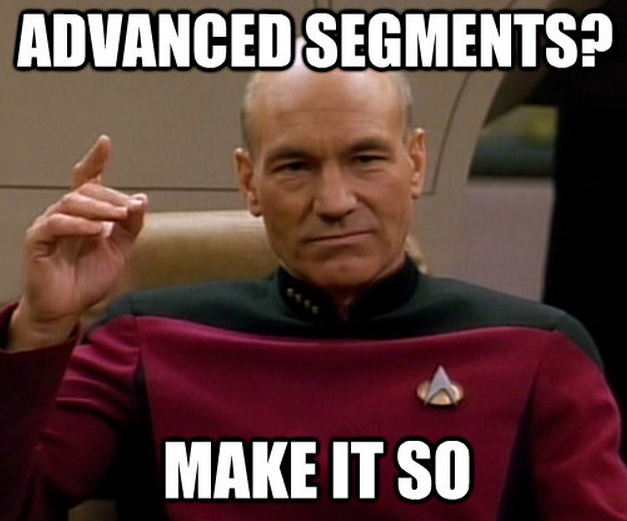If you’ve been following along, this is our third and final stop in our Google Analytics workshop series. By now you should have:
1. Gotten set-up (if not, no worries! Refer to step 1: setup)
2. Run your first round of reports (if you need a refresher, go to step 2: report analysis)
And now we’re on to step 3: learning a few advanced techniques to help you get the most out of web analytics reporting.
Advanced Segments
As mentioned in our last workshop, advanced segments are useful when you want to compare two pieces of data, or create an “if this, than that” statement. Much like creating custom reports, advanced segments make it so that you can read between the lines and dig deeper into the efficiency of your online marketing efforts. These types of tools can help you answer questions like:
“Of all of my site visits, which are bounce and non-bounce?”
“Which visits were conversions, and who stopped mid-way through the conversion process?”
“Which visitors are brand aware, making repeat visits; and which are new?”
Google, being as thorough as it is, even made advanced segments ready-to-use to make it easier to add to your current reporting.
Linking AdWords to Analytics
It may surprise you, but linking your AdWords and Analytics accounts can supercharge your keyword marketing efforts. While each of these tools is great alone, it only shows you one side of the picture. AdWords tells you which keywords and search terms are good to use, but it doesn’t measure how effective they are as far as conversions are concerned. When you link these two accounts, you can track and measure each keyword for effectiveness. Essentially, you are able to analyze each facet of your keyword campaign and make more informed decisions in the future about which keywords are the most popular and effective for your target market.
This video tells you how to create the link between your accounts:
In-Page Analytics
In-page analytics can be viewed by clicking “in-page analytics” under the contents tab of your Standard Reports bar. This view gives you a visual of your site that shows which links are getting the most traffic. Say you wanted to promote a new link or new section of your page; but where should you position it? This view can help you determine the best site layout by showing you what is popular for your viewers. In short, this advanced technique rocks.
eCommerce Tracking
The fourth and final of our advanced techniques we will talk about is eCommerce tracking. This feature is great for businesses who use their site to conduct transactions. eCommerce tracking allows you to measure which products are preferred by your customer base, which products are bought in conjunction with one another, the duration of the entire purchase process, as well the time spent at each step. This tool is great because it can help you get into the mind of your customer, see what they see, and experience what they experience. This invaluable insight will help you create an optimal customer experience for your buyers.
—
So that’s all for this workshop tutorial. Hopefully, you now feel acquainted and comfortable with the Google Analytics platform and are comfortable running your own campaigns. If you have anymore questions, or want to seek out more tips, check out the Google Analytics website.
